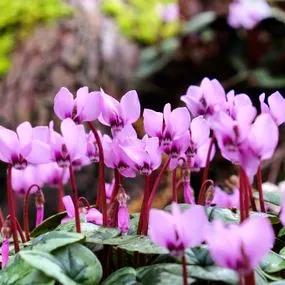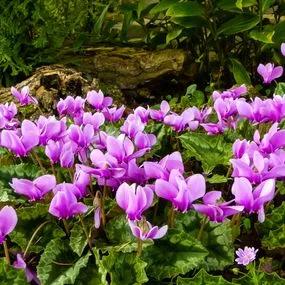Dry Corms, Premium Size
Delivered Direct from Our Nursery
Autumn & Spring flowering hardy Cyclamen produce dainty little flowers on leafless stems in shades of white, pink, red and purple.
Cyclamen corms (bulbotubers) lie dormant through the summer heat then, depending on variety and weather, flowers appear between the end of August / early September and into the new year.
Cyclamen are easy to add to any size garden, and they make wonderful container or window box subjects.
Browse our full range of flower bulbs, or our spring flowering bulbs.
For strong establishment and the best flowering, we recommend using the Bulb Starter Rootgrow blend.
Your bulbs are delivered by mail order direct from our nursery, along with expert advice and friendly support.
See our handy bulb planting guide for the best flowering results.





